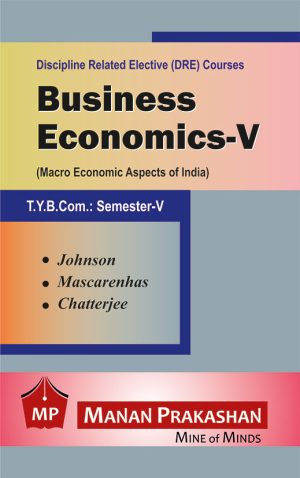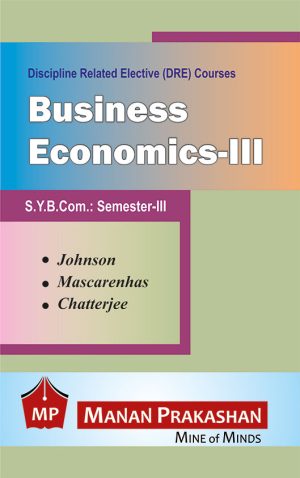Description
Computer Systems And Applications
TYBCOM Semester V
Syllabus
Module – I : Data Communication, Networking and Internet (18 Lectures)
(a) Data Communication Components, Data representation, Distributed processing. (Concepts only)
(b) Network Basics and Infrastructure
(i) Definition, Types (LAN, MAN, WAN) Advantages
(ii) Network Structures – Server Based, Client server, Peer to Peer
(iii) Topologies – Star, Bus, Ring
(iv) Network Media, Wired – Twisted Pair, Co-axial, Fiber Optic and Wireless – Radio and Infrared
(v) Network Hardware : Hubs, Bridges, Switches, Routers
(vi) Network Protocols – TCP/IP, OSI Model
(c) Internet
(i) Definition, Types of connections, Sharing internet connection, Hot Spots.
(ii) Services on net – WWW, Email-Blogs.
(iii) IP addresses, Domain names, URLs, Hyperlinks, Web Browsers
(iv) Searching Directories, Search engines, Boolean search (AND, OR, NOT), Advanced search, Meta Search Engines.
(v) Email-POP/SMTP accounts in Email, Different parts of an Email address. Receiving and sending emails with attachments by scanning attachments for viruses.
(vi) Cyber Crime, Hacking, Sniffing, Spoofing
Module – II : Database and MySQL (9 Lectures)
1. Introduction to Databases, Relational and Non-relational database system MySQL as a Non-procedural Language. Views of data.
2. MySQL Basics : Statements (Schema Statements, Data statements, Transaction statements), names (table & column names), data types (Char, Varchar, Text, Mediumtext, Longtext, Smallint, Bigint, Boolean, Decimal, Float, Double, Date, Date Time, Time Stamp, Year, Time), Creating Database, inserting data, Updating data, Deleting data, expressions, Built-in-functions – lower, upper, reverse, length, ltrim, rtrim, trim, left, right, mid, concat, now, time, date, curdate, day, month, year, dayname, monthname, abs, pow, mod, round, sqrt Missing data (NULL and NOT NULL, DEFAULT values), CREATE, USE, ALTER (Add, Remove, Change columns), RENAME, SHOW, DESCRIBE (CREATE TABLE, COLUMNS, STATUS and DATABASES only) and DROP (TABLE, COLUMN, DATABASES statements). PRIMARY KEY, FOREIGN KEY (One and more columns). Simple Validity checking using CONSTRAINTS.
Module – III : Database and MySQL (9 Lectures)
(a) MySQL Simple queries : The SELECT statement (From, Where, Group By, Having, Order By, Distinct), Filtering Data by using conditions. Simple and complex conditions using logical, arithmetic and relational operators (=, !=, <, >, < >, AND, OR, NOT, LIKE,) Aggregate Functions – count, sum, avg, max, min.
(b) Multi-table queries : Simple joins (INNER JOIN), SQL considerations for multi table queries (table aliases, qualified column names, all column selections, self joins).
(c) Nested Queries (Only upto two levels) : Using sub queries, sub query search conditions, sub queries & joins, nested sub queries, correlated sub queries, sub queries in the HAVING clause.
Simple Transaction illustrating START, COMMIT and ROLLBACK.
Module – IV : Spread Sheet (9 Lectures)
(a) Creating and Navigating worksheets and adding information to worksheets
(i) Types of data, entering different types of data such as texts, numbers, dates, functions.
(ii) Quick ways to add data Auto complete, Auto correct, Auto fill, Auto fit. Undo and Redo.
(iii) Moving data, contiguous and non contiguous selections. Selecting with keyboard, Cut-Copy Paste. Adding and moving columns or rows. Inserting columns and rows.
(iv) Find and replace values. Spell check.
(v) Formatting Cells, Numbers, Date, Times, Font, Colors, Borders, Fills.
(b) Multiple Spreadsheets
(i) Adding, removing, hiding and renaming worksheets.
(ii) Add Headers/Footers to a Workbook. Page breaks, previews.
(iii) Creating formulas, inserting functions, cell references, Absolute, Relative (within a worksheet, other worksheets and other workbooks).
(c) Functions
(i) Financial functions : FV, PV, PMT, PPMT, IPMT, NPER, RATE
(ii) Mathematical and statistical functions.
ROUND, ROUNDDOWN, ROUNDUP, CEILING FLOOR, INT, MAX, MIN, MOD, SQRT, ABS, SUM, COUNT, AVERAGE
(d) Data Analysis
(i) Sorting, Subtotal.
(ii) Pivot Tables – Building Pivot Tables, Pivot Table regions, Rearranging Pivot Table.
Note :
(a) Theory 3 lectures per week.
(b) Practical batch size 20-25, 1 practical = 3 theory lectures per week.
(c) 10 practicals are to be completed in each semester.
SEMESTER – V
Topic Number of Practicals
Word processing 1
MS-Excel 3
MySQL 6
Minimum 6 practicals are to be recorded in the journal in the Semester V.
[Minimum 4 on MySQL, 2 on MS-Excel]
(d) Scheme of Examination
Type Marks Duration
Theory 75 2½ hours
Practicals 20 1 hour per batch of 10
Active Participation and Class Conduct 5
Practical Examination Pattern – Semester – V :
Q.No. Question No. Marks
1 MySQL 7
2 MS-Excel 3
3 Journal 5
4 Viva 5
(e) Practical examination to be conducted 2 to 3 weeks before the theory examination. Marks out of 25 to be submitted to the University before commencement of theory examination.
(f) Software Requirement :
MS-Excel 2010, MySQL version 5 or 5.1, VB 6.0.
(g) Hardware
For a batch of 120 students minimum 10 computers with appropriate hardware and software installed on each computer. During practical hours maximum two student may share one computer.
(h) For in house computing facility fee of rupees 750/- be charged for each student per Semester in the existing fee structure against head of computer fee/computer practical.






Reviews
There are no reviews yet.